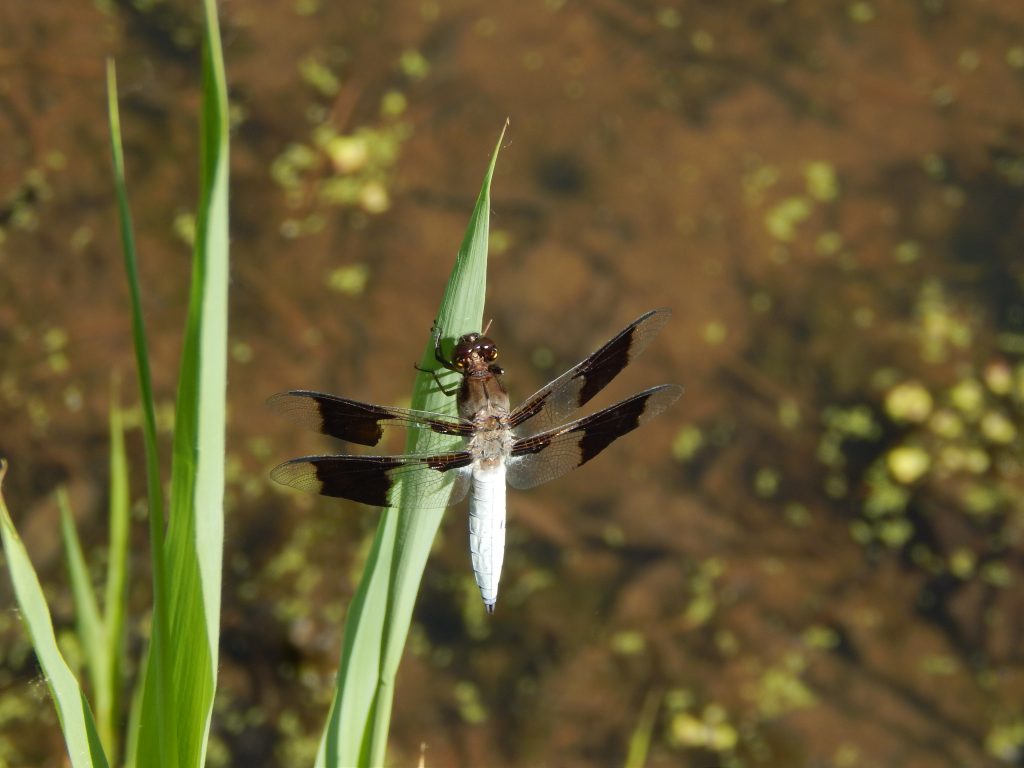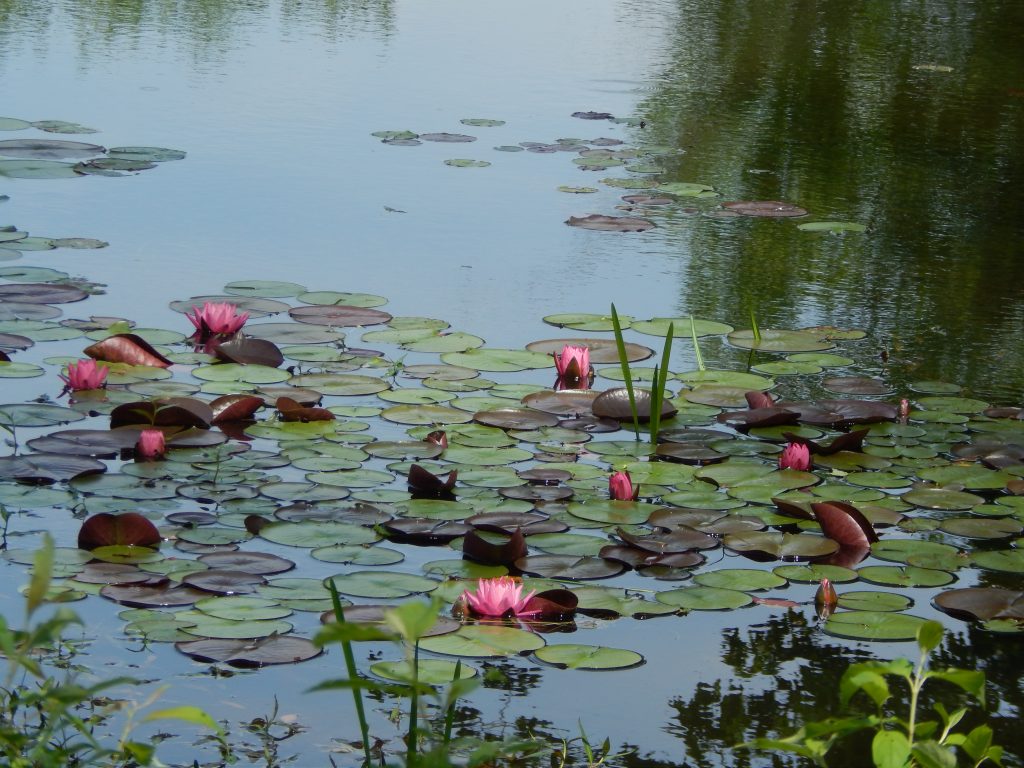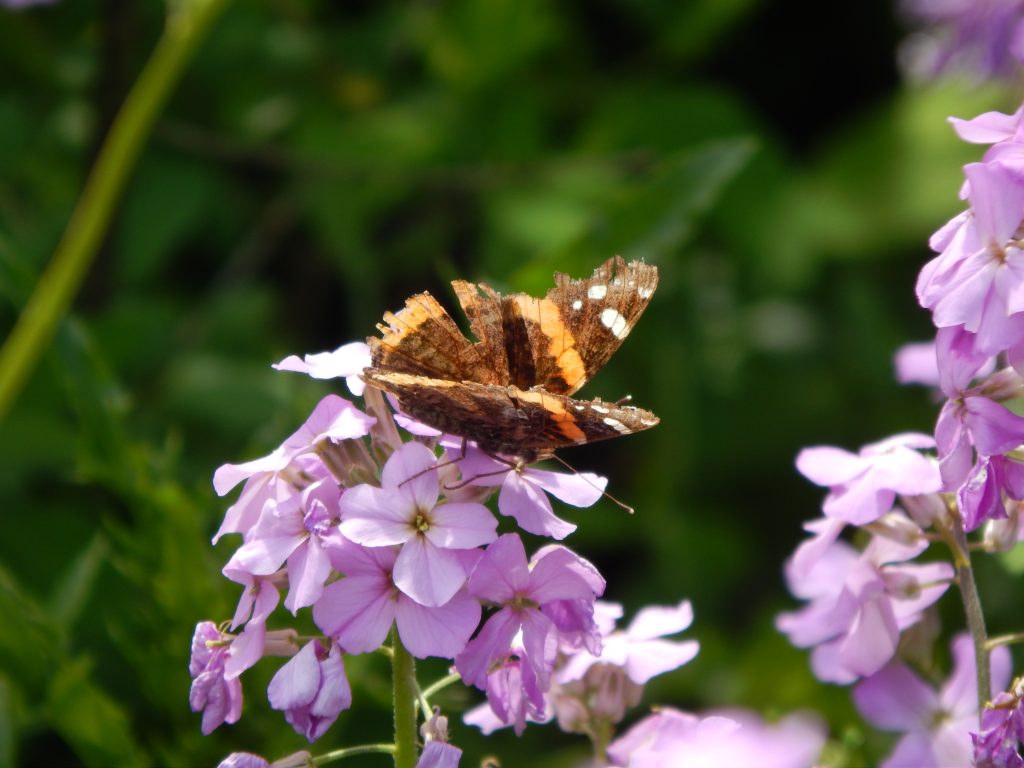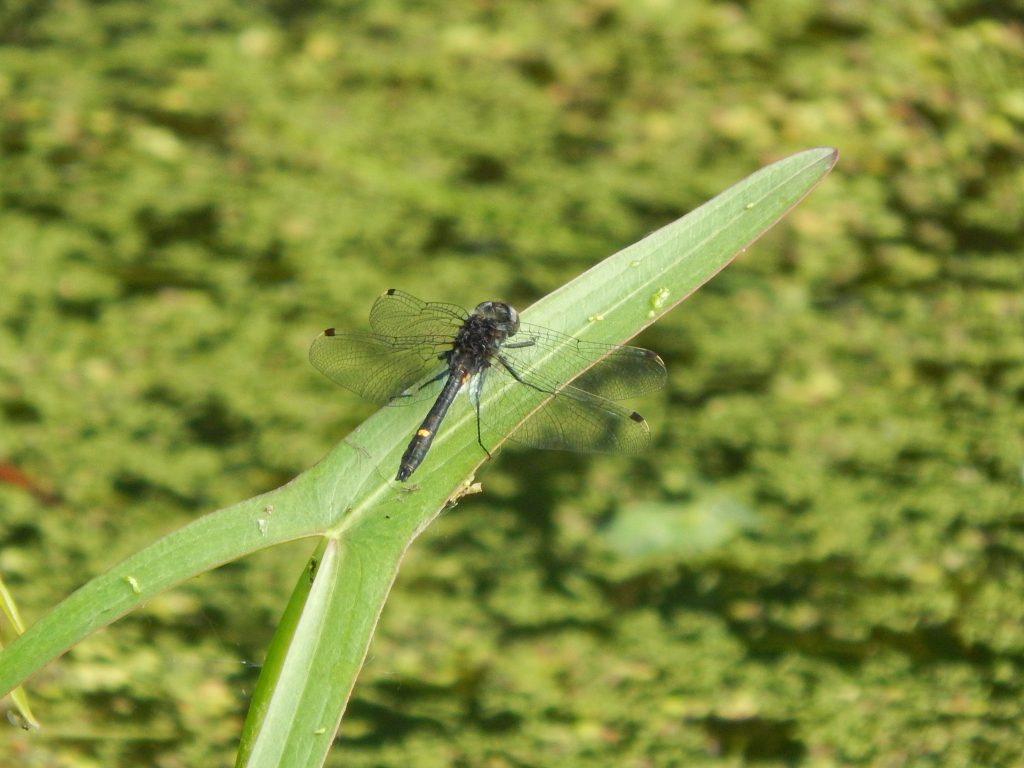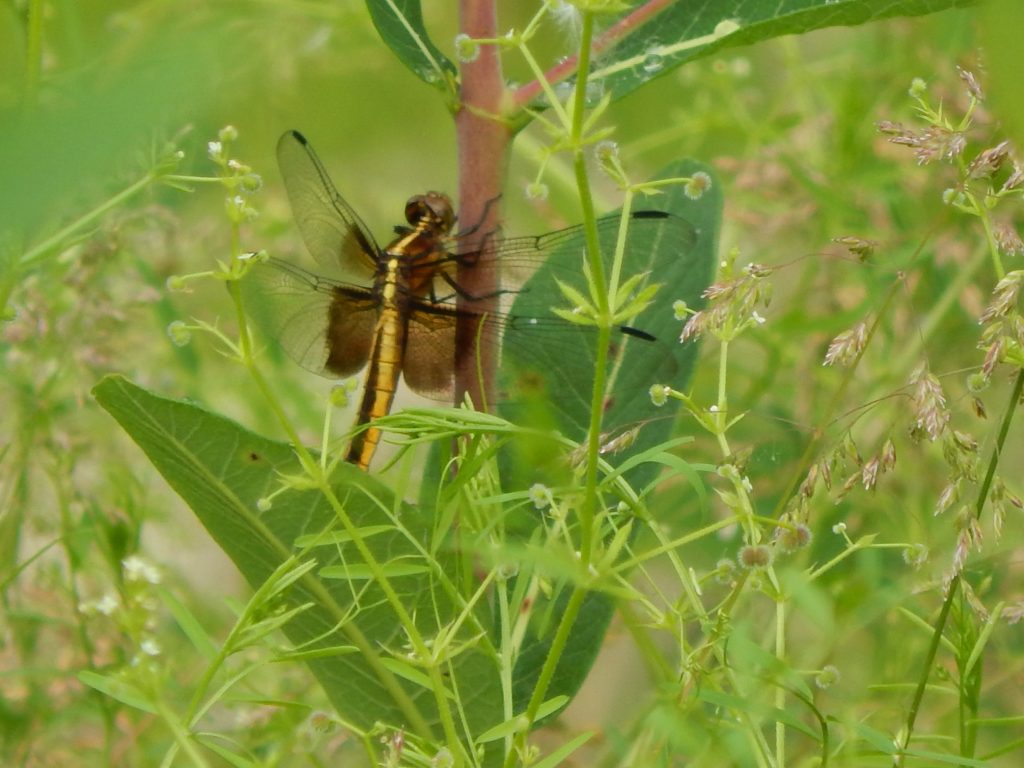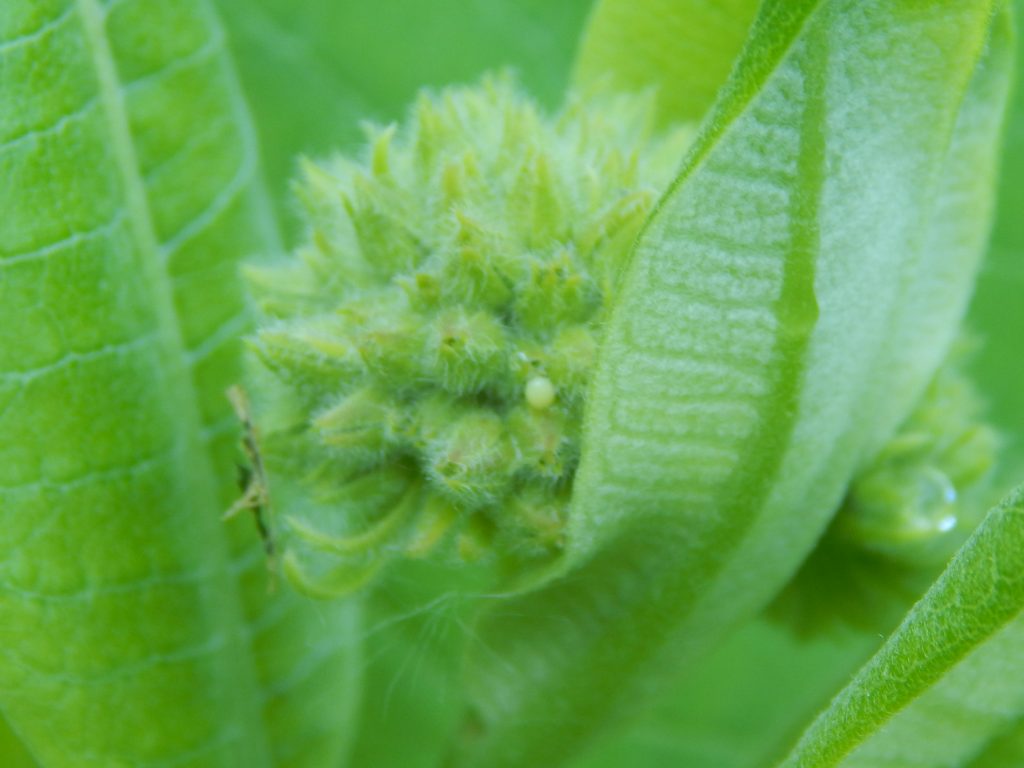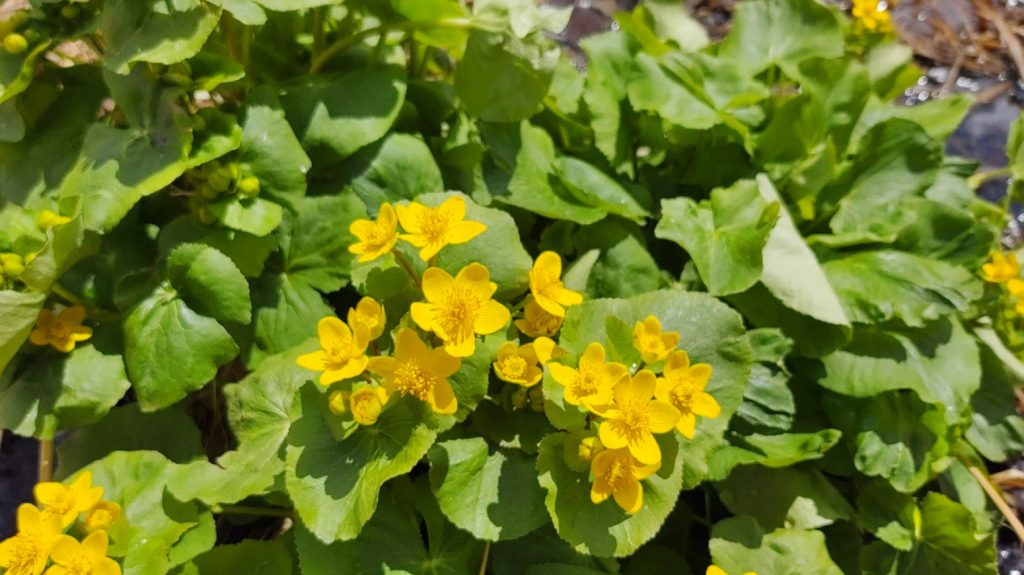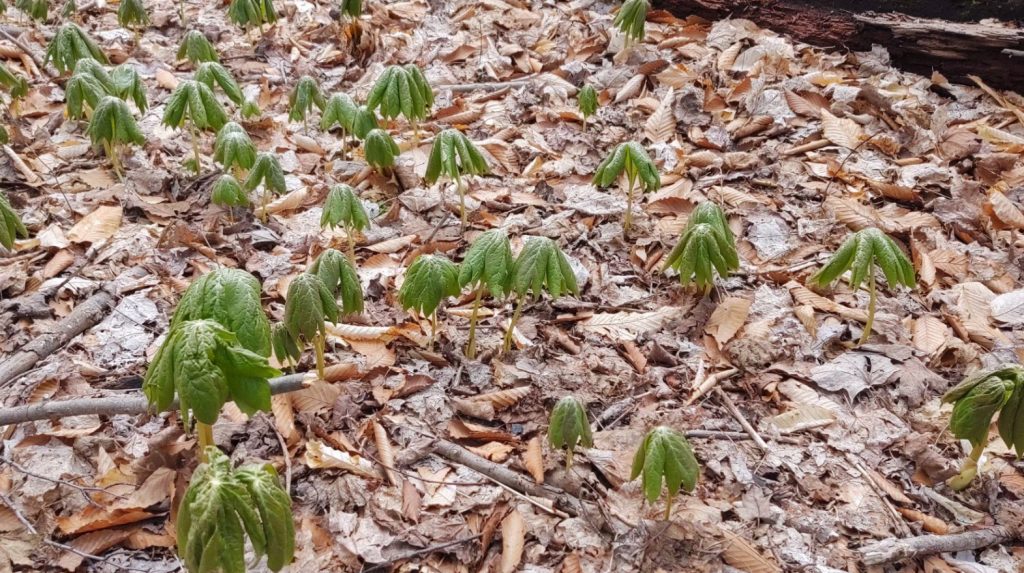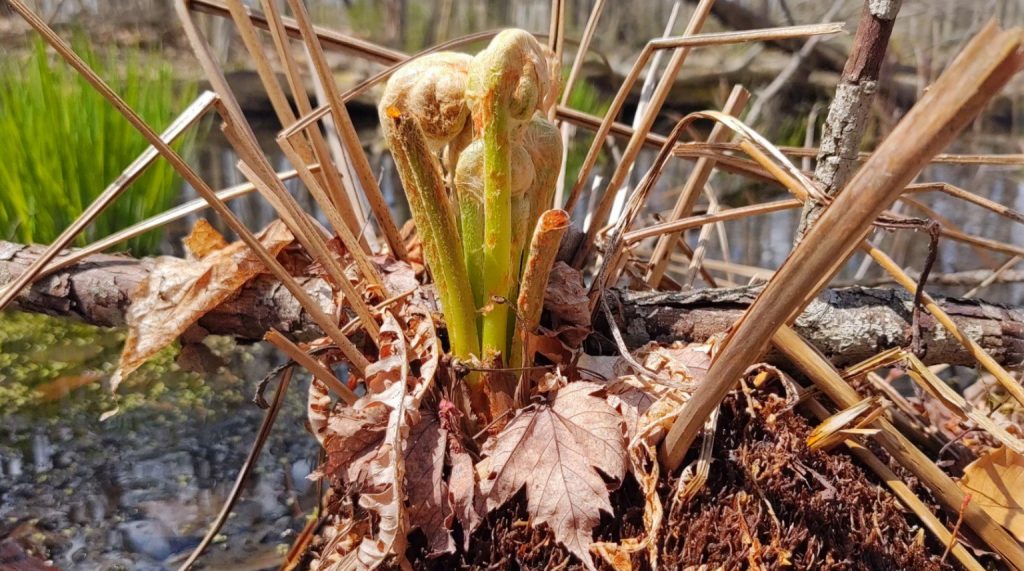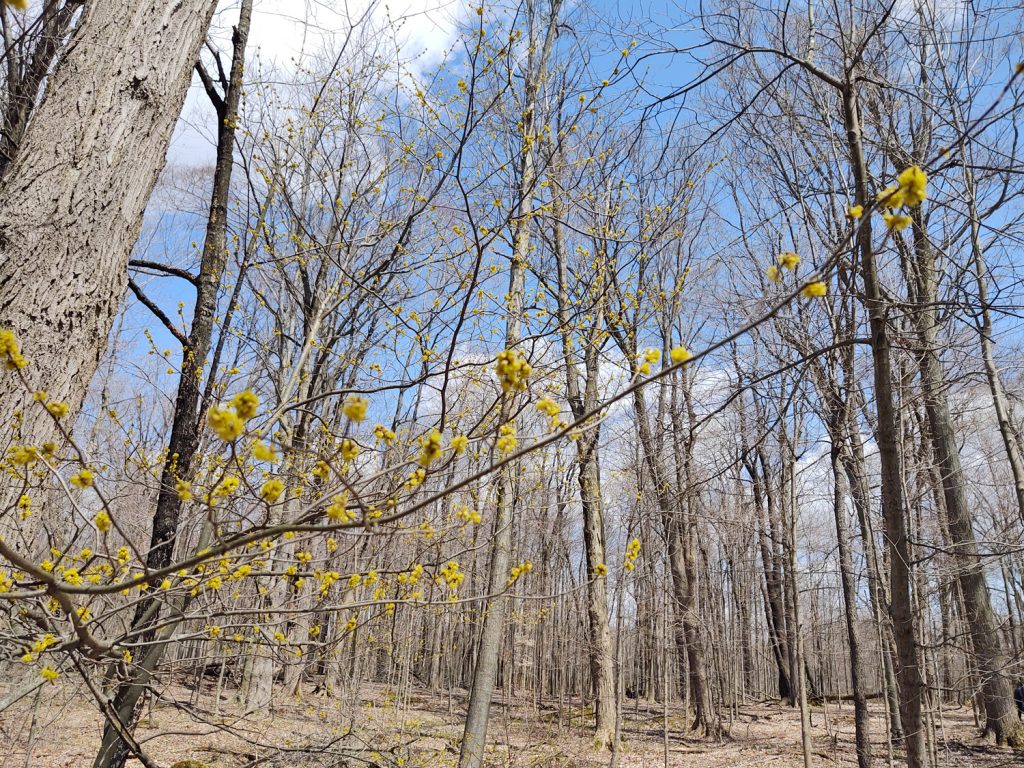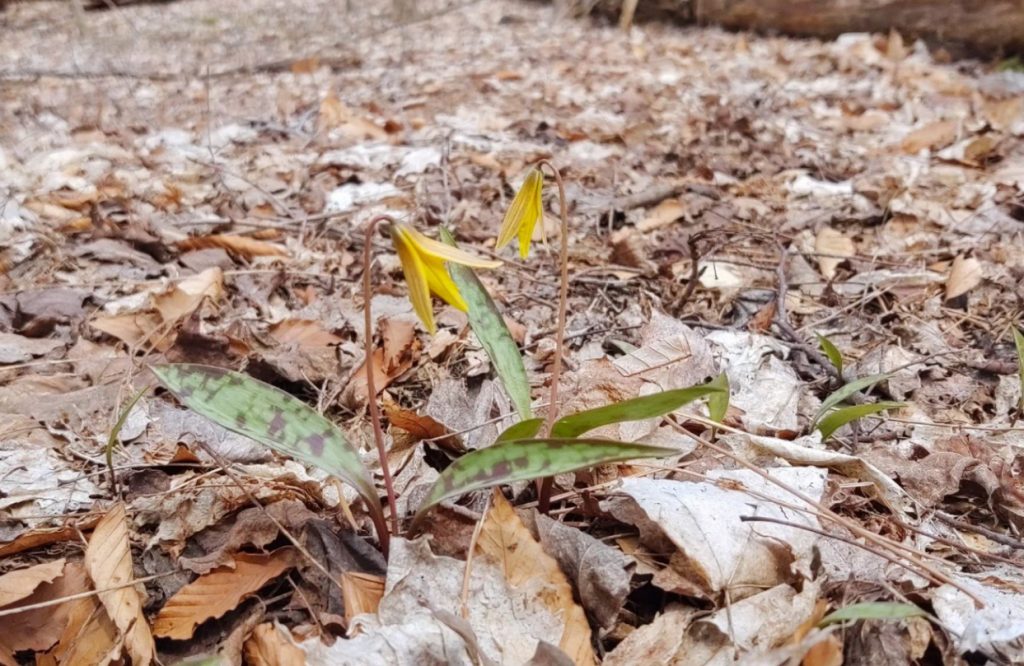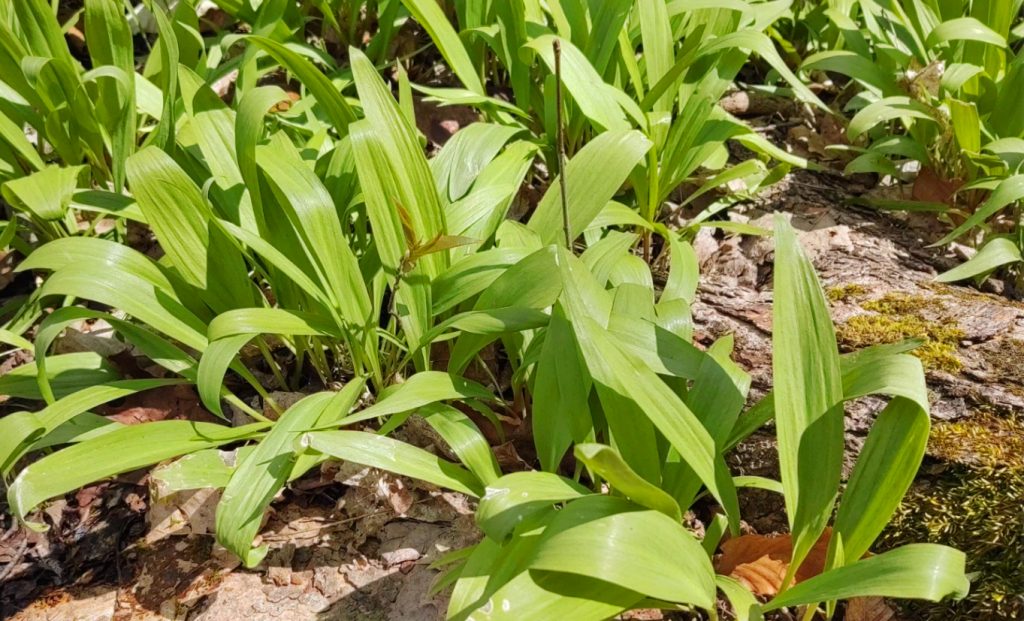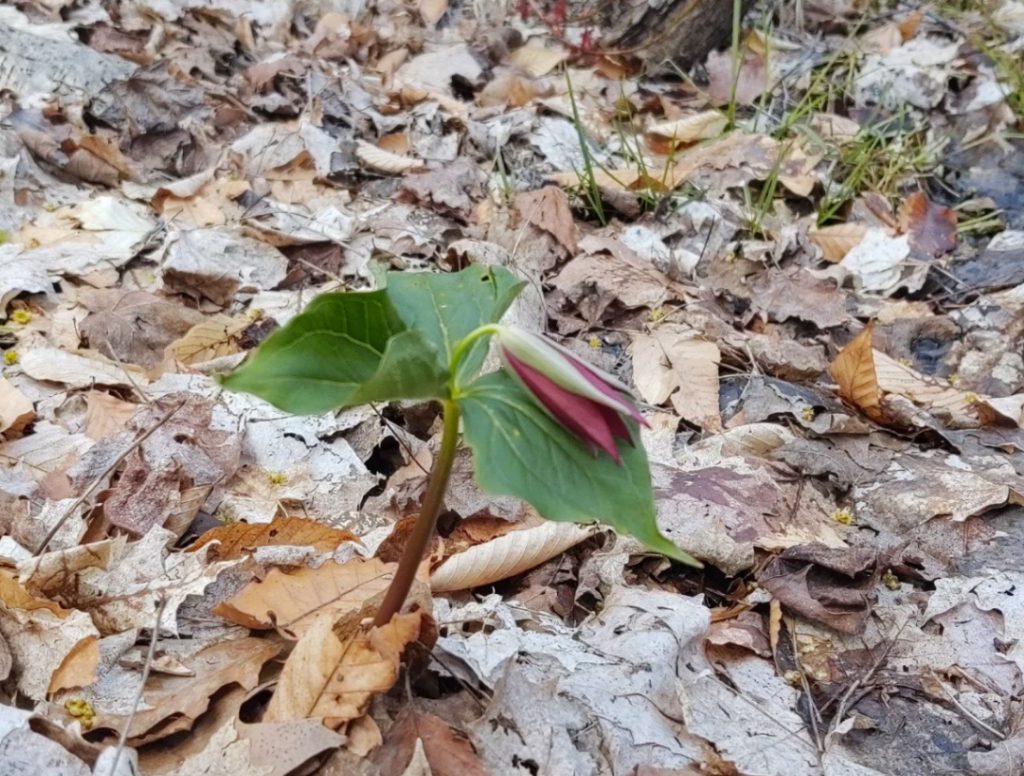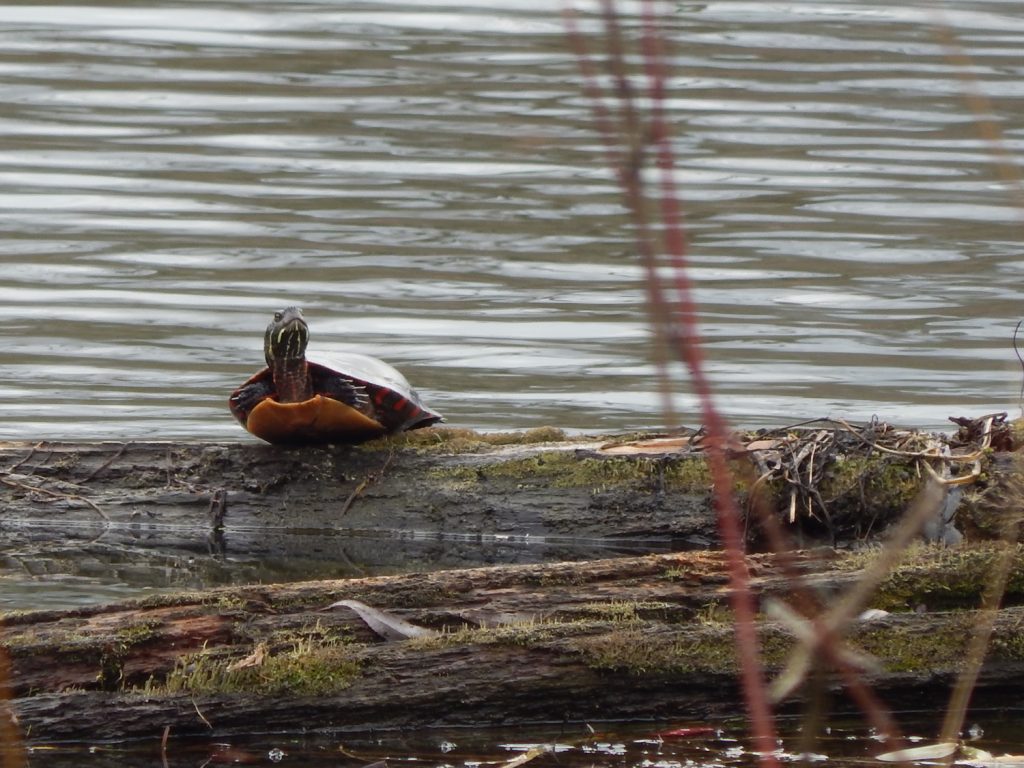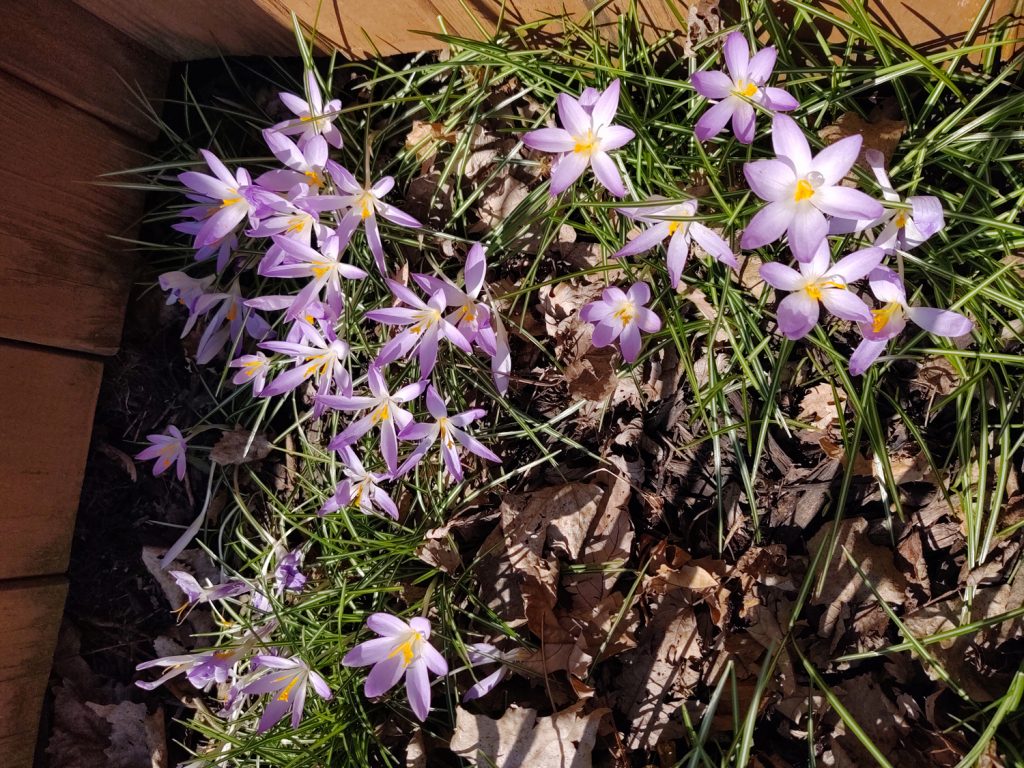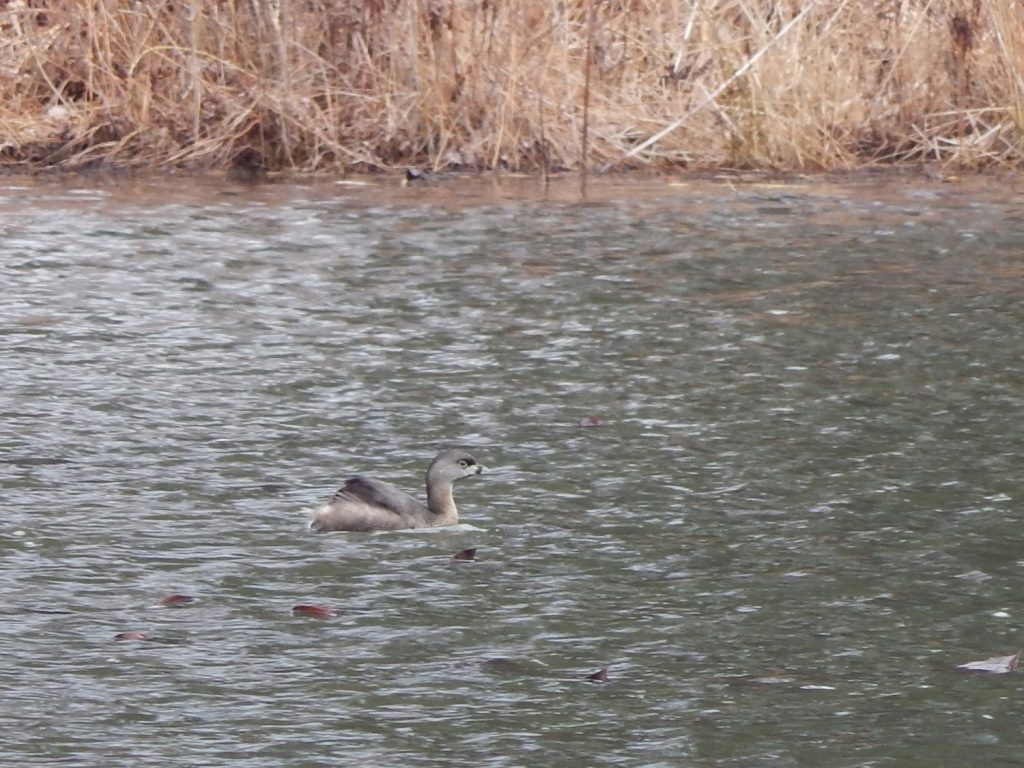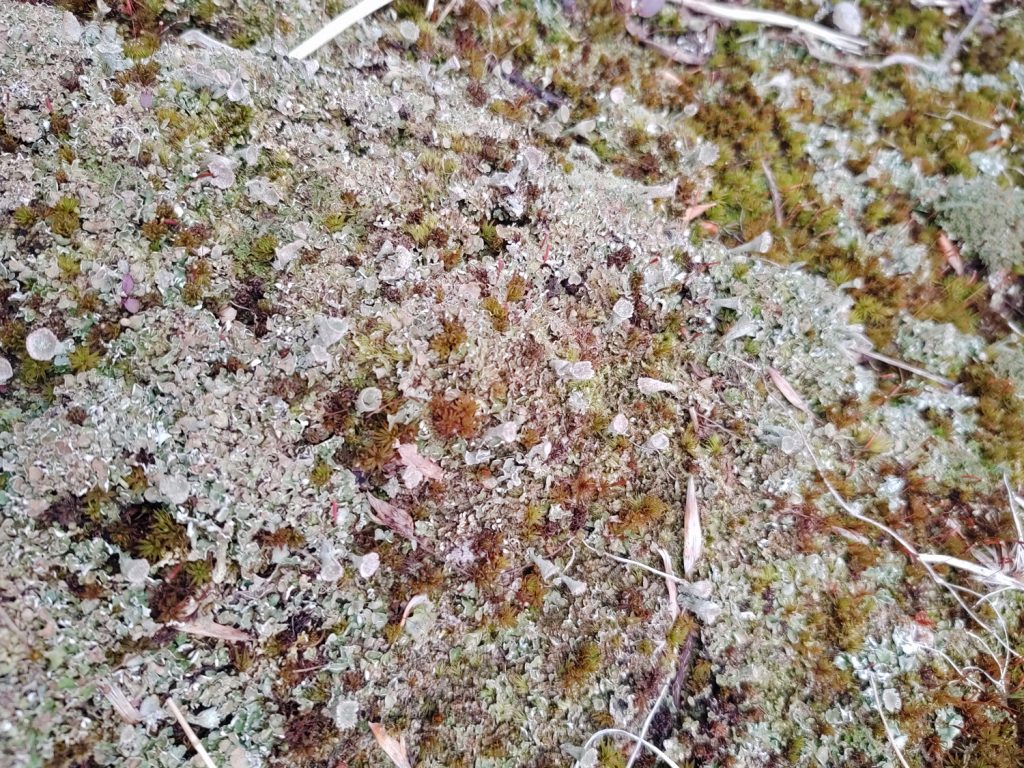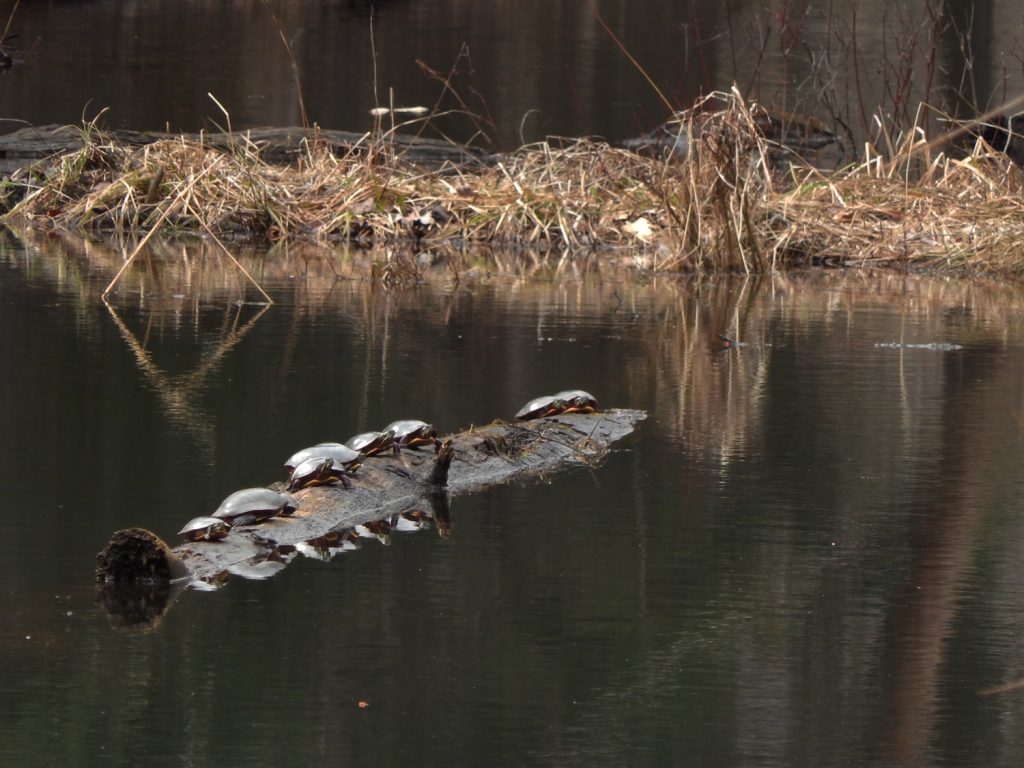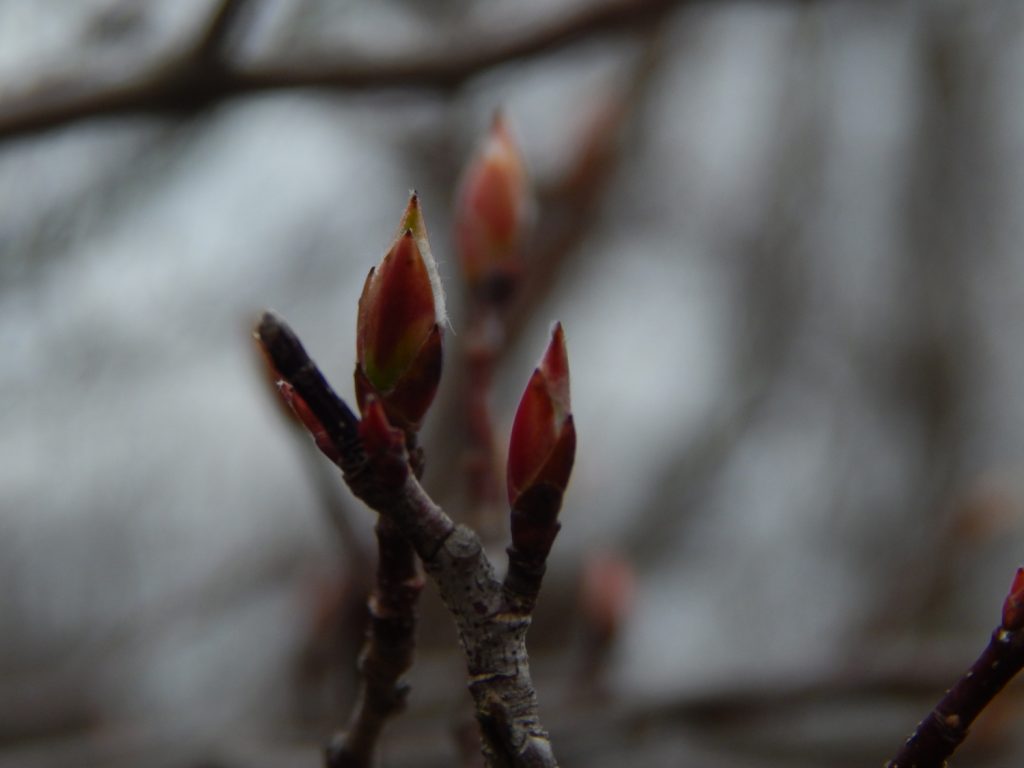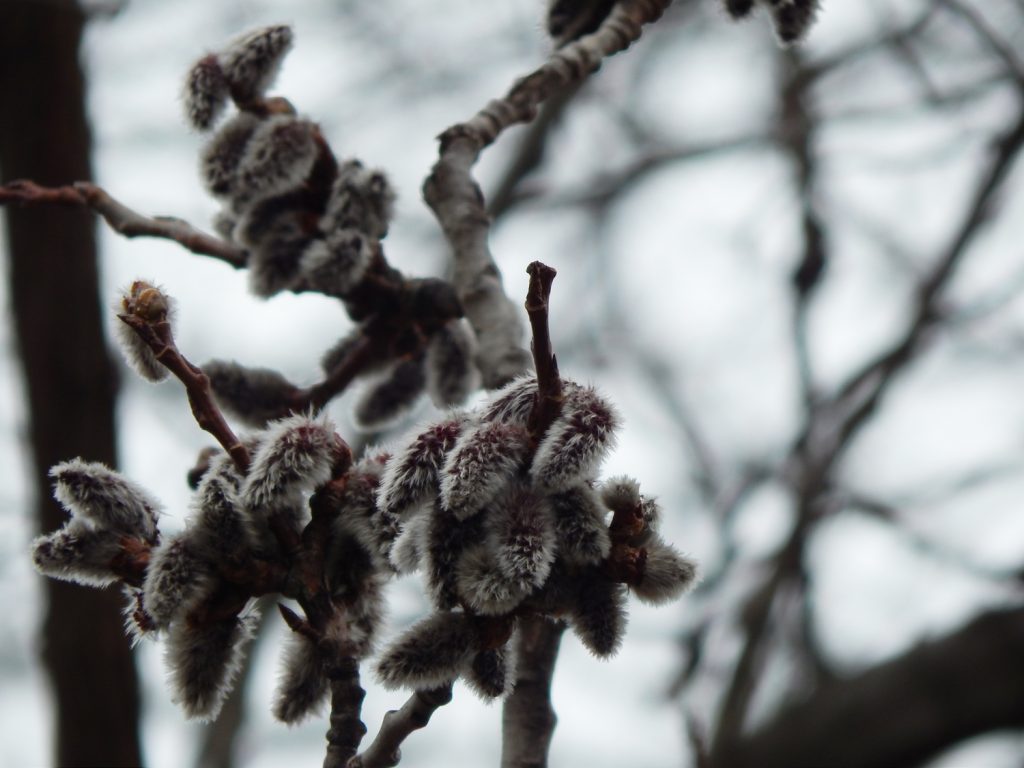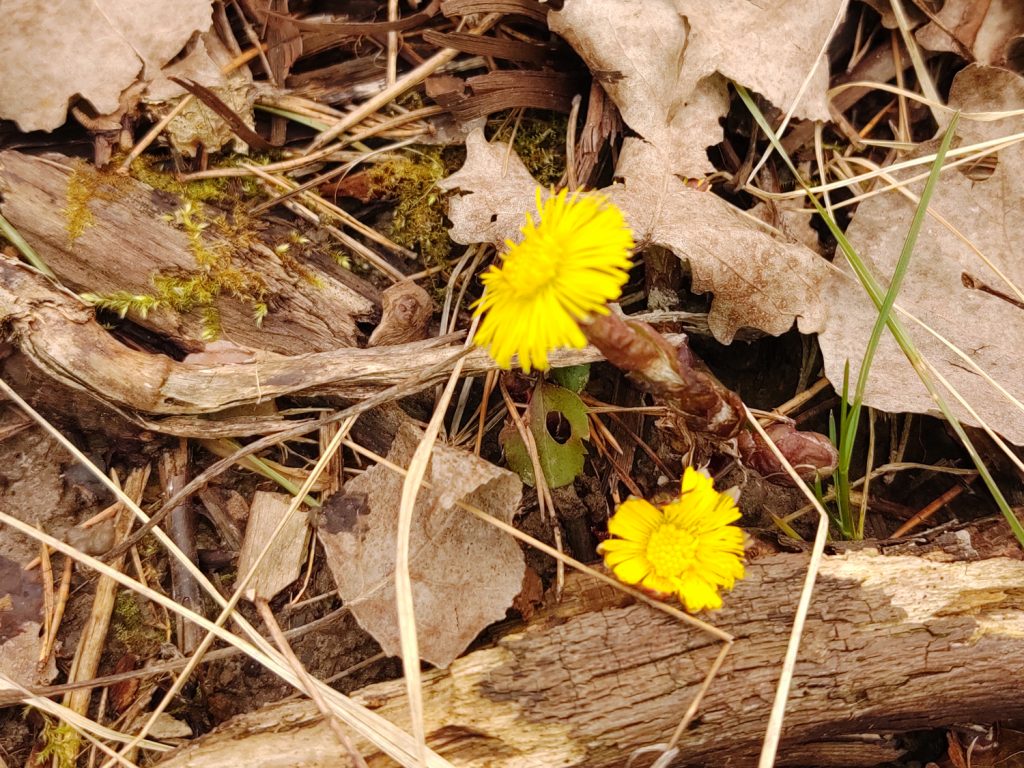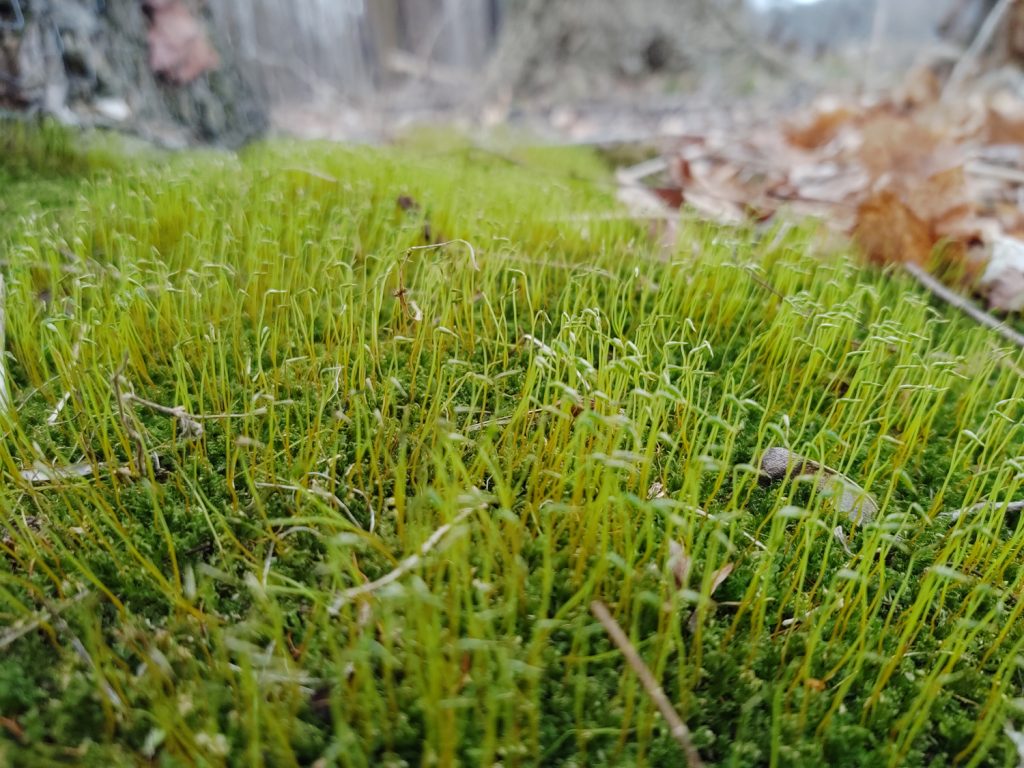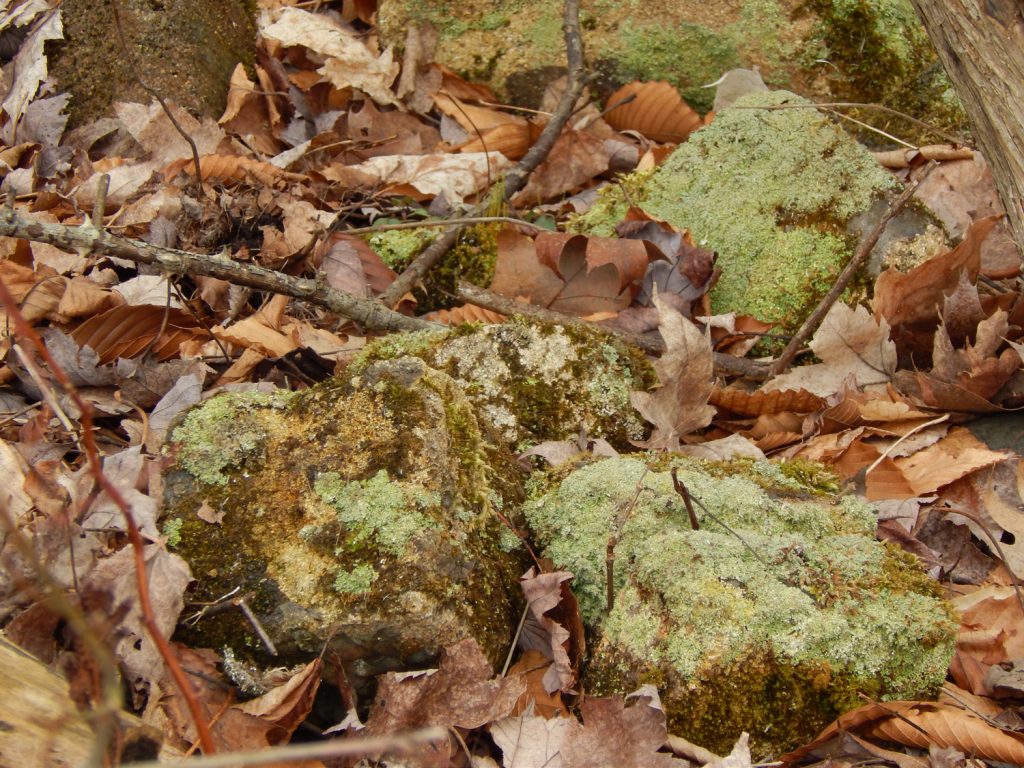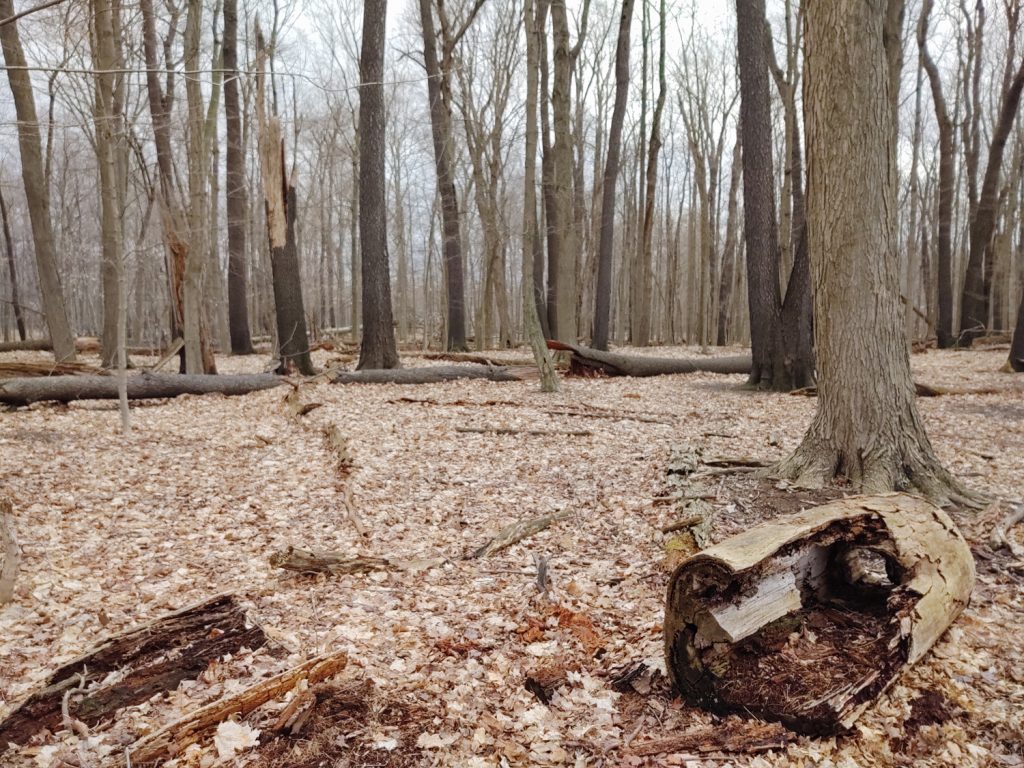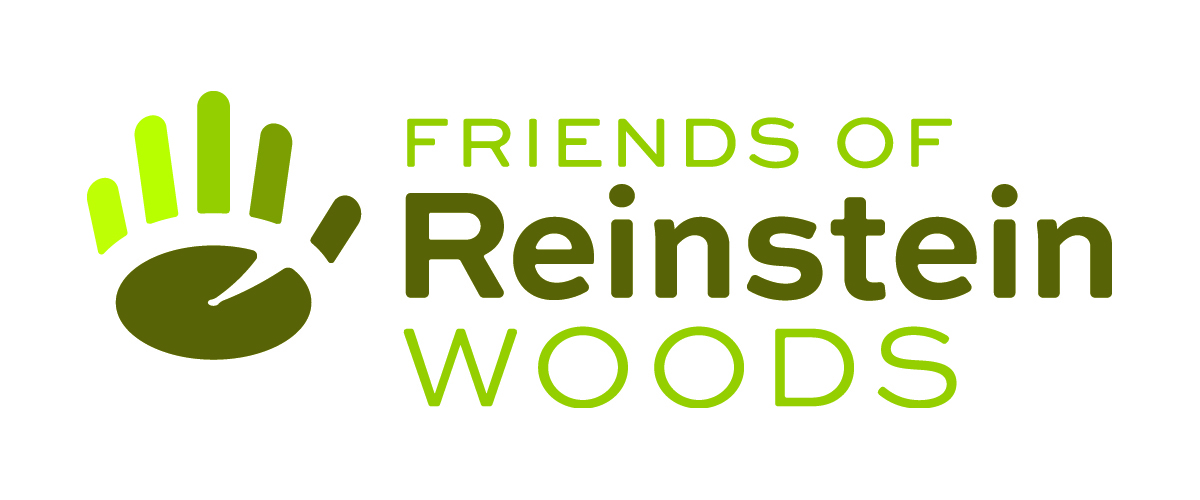Tag Archives: Nature Sightings
Nature Sightings
As summer approaches, cottonwood seeds begin to float through the air. Flowering Dame’s rockets attract many pollinators such as hummingbird clear wing moths, red admiral and tiger swallowtail butterflies. You will also find a variety of bee visitors. Dragonflies are emerging from the ponds and will increase in numbers through July. The vibrant common whitetail cruise along the pond edges coming to rest on a stick protruding from the water. Ash trees, black locust, and wild grape vines are flowering. The “Gunk” calls of green frogs fill the air with an occasional jug o rum call of the bullfrogs. The melodic whistle of the Baltimore oriole is a frequent sound around the trails. Look for their hanging woven nests above the trails. Great blue heron wade through the water lilies (in full bloom), stealthily spearing unsuspecting fish. Sunfish and blue gills hover over their gravel nests fanning it with their fins. Black swallowtail butterflies may be seen laying their eggs on wild carrot leaves. Keep an eye out for snapping turtles laying their eggs in early morning. They will sometimes travel a fair distance to find a suitable place to lay their eggs. With Monarch butterflies returning, look for them to be laying eggs on common milkweed plants.
Nature Sightings
The spring greening is just beginning. The herb layer of the forest floor is coming alive with sprouting mayapple and trout lily. In wetter seep areas, marsh marigolds are blooming, not to be confused with invasive lesser celandine. Many people have lesser celandine flowering in their yards right now. Wild leeks are also forming dense patches. Spicebush is showing off its small golden flowers and black cherry are beginning to leaf out. The preserve is a bit quieter now that the Canada geese are on their nests. Ruby-crowned kinglets group together and frantically flit about gleaning insects from dense trailside vegetation. Hermit thrush and yellow-rumped warblers have also returned. Large bullfrog tadpoles explore the warmer shallow waters of ponds. The long trills of American toads resonate through the preserve. Garter snakes slither through the sunlit papery leaves on the forest floor. Keep an eye out for Baltimore orioles and ruby-throated hummingbirds returning shortly.
Nature Sightings
These warm spring days have buds about to burst. Some of the early flowers such as coltsfoot and crocuses are blooming. Moss and lichen are very vibrant right now. Waterfowl migrants such as pied-billed grebes have returned. Watch them dive in search of crayfish, aquatic insects and fish. Canada geese have separated out into pairs and will soon be on their nests. Watch them stretch their long necks underwater in search of aquatic plants. The water lilies are just starting to break the surface in shallow waters. Remnants of beaver chewed sticks, with their bark removed, are afloat on lily pond. The chorus of spring peeper frogs can be heard especially at lily pond, tussock marsh, and secluded swamp. An occasional snore from a leopard frog can also be heard from secluded swamp. Painted turtles have crawled out onto floating logs to soak up the sunny warmth. Trees such as silver maple, pussy willow, and quaking aspen are starting to show their flowers. Soon trout lily and Mayapple shoots will dapple the forest floor. Ticks are very active right now, so please remember to enjoy nature from the trails.
Nature Sightings
It’s that time of year when Reinstein Woods comes alive with spring migrants, sprouting 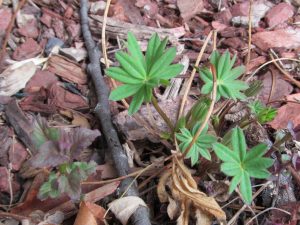 flowers and the chorus of Frogs. Every day on the trail will bring a new adventure. The marshy ponds have erupted into a full chorus of spring peepers over the past week. Birds are becoming much more vocal, adding
flowers and the chorus of Frogs. Every day on the trail will bring a new adventure. The marshy ponds have erupted into a full chorus of spring peepers over the past week. Birds are becoming much more vocal, adding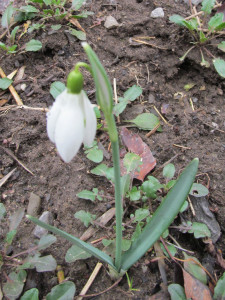 seasonal songs to their repertoire. Male spotted salamanders have been seen locally and are likely at their breeding pools awaiting females. Vernal ponds will soon ripple with their courtship water dances. Look for turkey vultures circling updrafts on warm sunny days. Hooded mergansers and ring-necked ducks have also stopped in for a rest during their migration. Warblers returning from the south will add a splash of color to the forest. Wild blue lupine, wild bergamot, snowdrops and lemon balm are just beginning to sprout in front of the education center. Very shortly the trill of American toads will resonate from small ponds and maybe even the snores of leopard frogs. The honks and quacks of ducks and geese will soon fall silent as they hide away resting on their nests.
seasonal songs to their repertoire. Male spotted salamanders have been seen locally and are likely at their breeding pools awaiting females. Vernal ponds will soon ripple with their courtship water dances. Look for turkey vultures circling updrafts on warm sunny days. Hooded mergansers and ring-necked ducks have also stopped in for a rest during their migration. Warblers returning from the south will add a splash of color to the forest. Wild blue lupine, wild bergamot, snowdrops and lemon balm are just beginning to sprout in front of the education center. Very shortly the trill of American toads will resonate from small ponds and maybe even the snores of leopard frogs. The honks and quacks of ducks and geese will soon fall silent as they hide away resting on their nests.
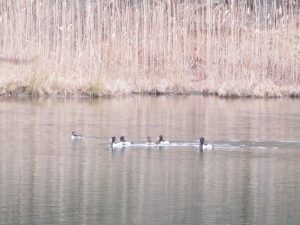
Nature Sightings
Flowering goldenrods tell us that summer is nearing an end. They will provide a pollen 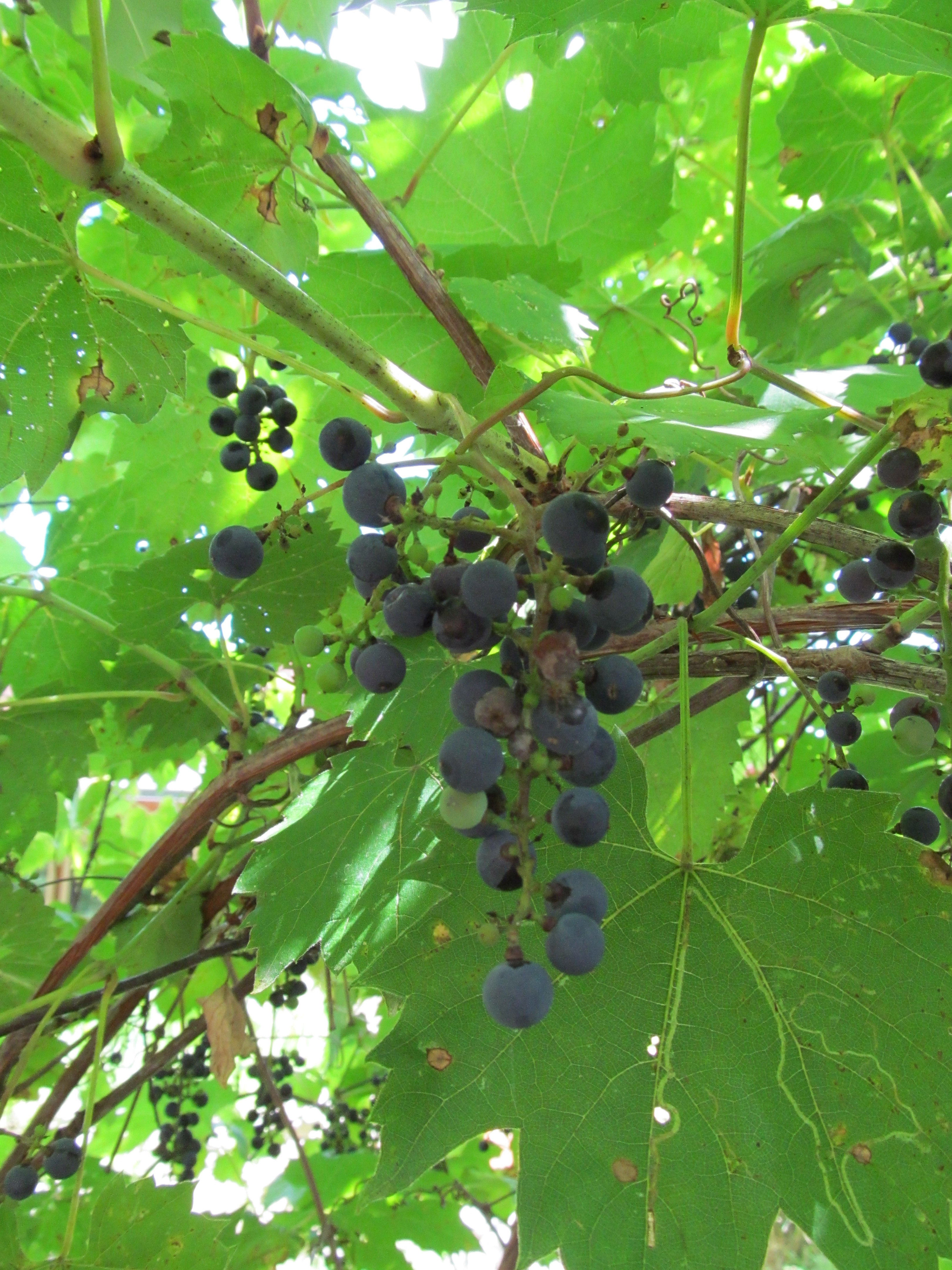 source for bees into autumn. Black cherry fruits and wild grapes are very ripe. These will be gathered by an array of birds, raccoons and other mammals. A close inspection of milkweed leaves may reveal a
source for bees into autumn. Black cherry fruits and wild grapes are very ripe. These will be gathered by an array of birds, raccoons and other mammals. A close inspection of milkweed leaves may reveal a 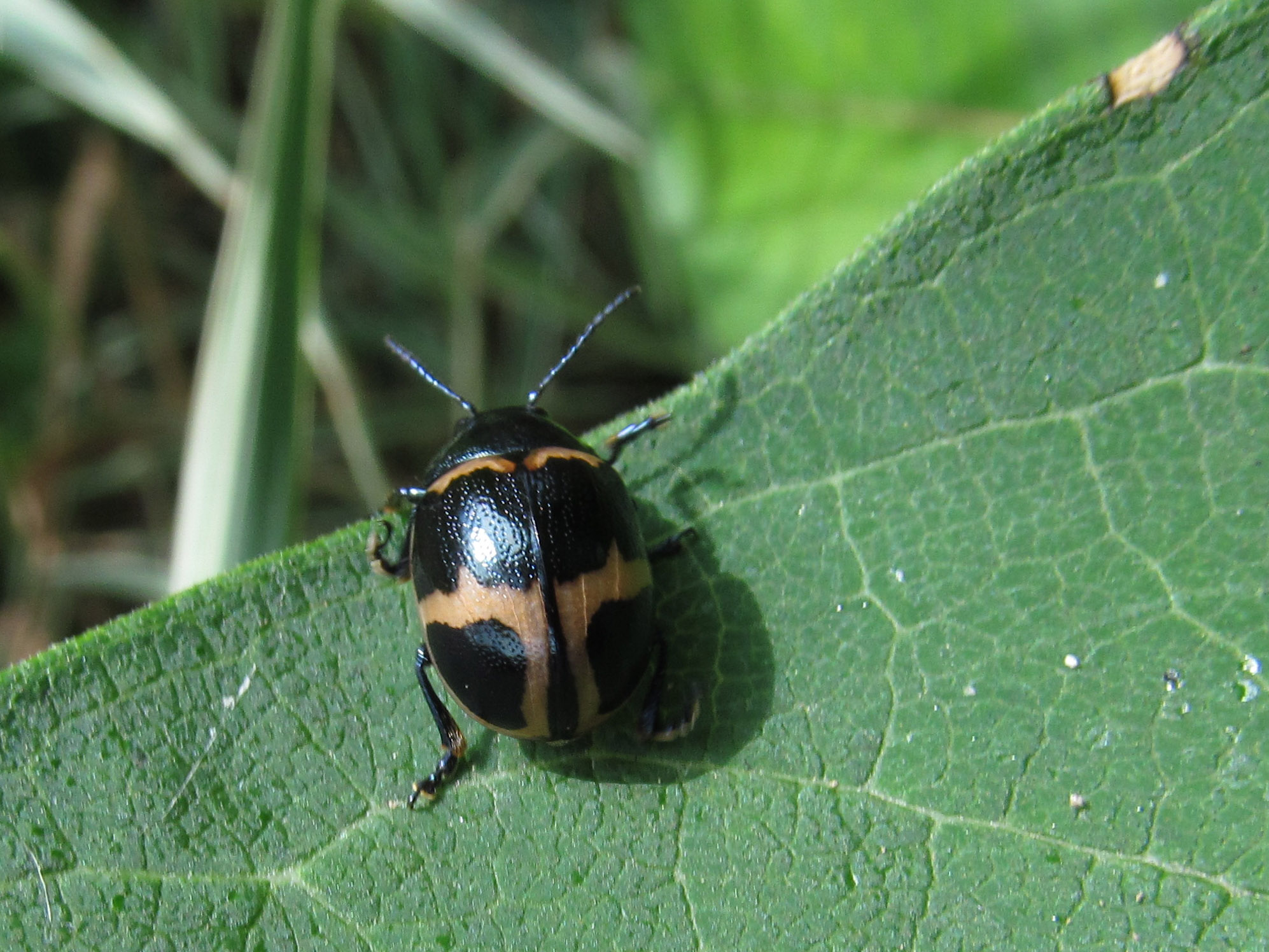 milkweed tussock caterpillar, swamp milkweed leaf beetle or dogbane leaf beetle. Monarch caterpillars are getting large feeding off milkweed as well. Monarch caterpillars will soon form a chrysalis and upon emergence they will make the long migration south. Ladybird beetles are beginning to appear and feed on aphids which may be found on common milkweed plants. Virginia creeper and some red maples are already beginning to
milkweed tussock caterpillar, swamp milkweed leaf beetle or dogbane leaf beetle. Monarch caterpillars are getting large feeding off milkweed as well. Monarch caterpillars will soon form a chrysalis and upon emergence they will make the long migration south. Ladybird beetles are beginning to appear and feed on aphids which may be found on common milkweed plants. Virginia creeper and some red maples are already beginning to 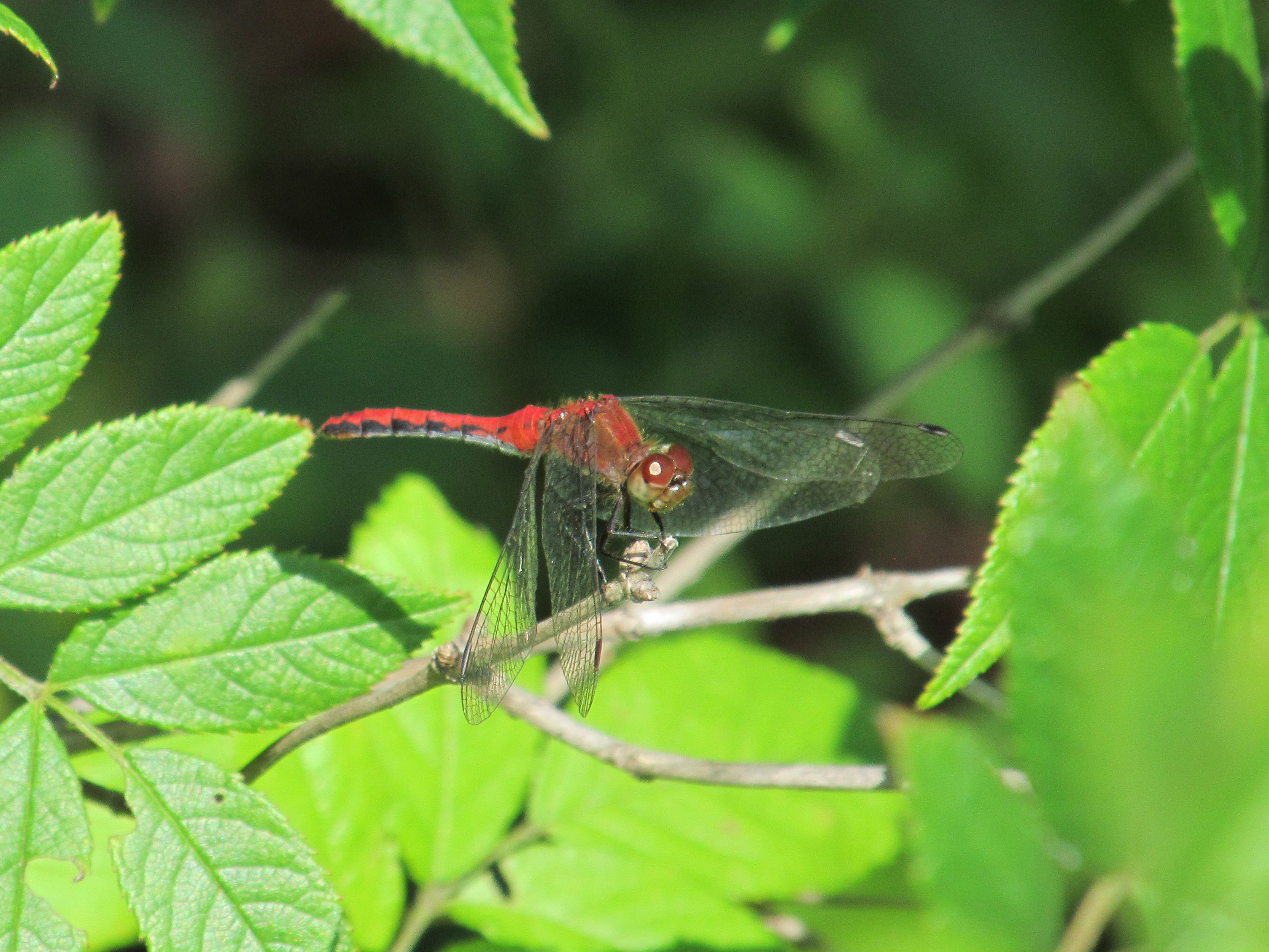 show a slight reddish hue in their leaves. Chicken mushrooms are growing from logs after some of our recent rains. Don’t be surprised if a meadowhawk dragonfly lands on you while you walk the trails. Don’t worry, dragonflies won’t bite or sting, they are just looking for a sunny perch. Black walnuts are becoming very large. Watch for red and gray squirrels collecting and storing these nuts for winter.
show a slight reddish hue in their leaves. Chicken mushrooms are growing from logs after some of our recent rains. Don’t be surprised if a meadowhawk dragonfly lands on you while you walk the trails. Don’t worry, dragonflies won’t bite or sting, they are just looking for a sunny perch. Black walnuts are becoming very large. Watch for red and gray squirrels collecting and storing these nuts for winter.
Nature Sightings at Reinstein Woods
 Springtime is speeding right along. Every day, there are many new things to see. Eastern forktail damselflies have crawled out of ponds and perch on vegetation allowing their delicate wings to dry. Wild flowers and other herb layer vegetation are busy taking advantage of full sun before the tree canopy blocks out light. Black cherries and choke cherries are flowering. Red maple branches are heavy with samaras. Wild flowers such as Jack-in-the-pulpit and dame’s rocket are in bloom. Yellow warblers, Baltimore orioles, Eastern
Springtime is speeding right along. Every day, there are many new things to see. Eastern forktail damselflies have crawled out of ponds and perch on vegetation allowing their delicate wings to dry. Wild flowers and other herb layer vegetation are busy taking advantage of full sun before the tree canopy blocks out light. Black cherries and choke cherries are flowering. Red maple branches are heavy with samaras. Wild flowers such as Jack-in-the-pulpit and dame’s rocket are in bloom. Yellow warblers, Baltimore orioles, Eastern  kingbirds, and ruby-throated hummingbirds have been seen around the preserve. The male orioles visit our jelly feeder while taking a break from protecting their territories. A pair of geese have three goslings close by them as they nip the new plant growth along spring pond. Listen for the green frog’s “gunk” call while enjoying the blooming pink fragrant water lilies the next time you are at Lily Pond. Soon, you may see newborn fawns stumbling around the trails at Reinstein Woods.
kingbirds, and ruby-throated hummingbirds have been seen around the preserve. The male orioles visit our jelly feeder while taking a break from protecting their territories. A pair of geese have three goslings close by them as they nip the new plant growth along spring pond. Listen for the green frog’s “gunk” call while enjoying the blooming pink fragrant water lilies the next time you are at Lily Pond. Soon, you may see newborn fawns stumbling around the trails at Reinstein Woods.
Are you interested in what’s happening on the trails of Reinstein Woods? Check back periodically for updates on “Nature Sightings at Reinstein Woods”. Feel free to leave a comment below if you would like to add your own wildlife sighting.
Nature Sightings at Reinstein Woods
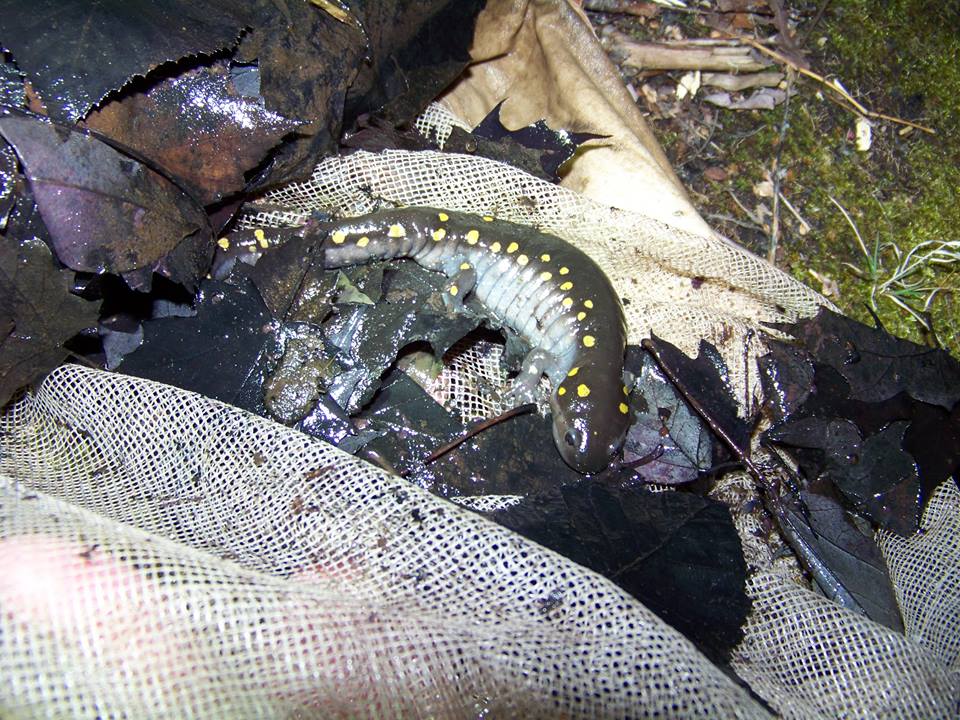 The ice and snow have melted at Reinstein Woods, and signs of spring are all around. Quaking aspen and red maples are beginning to flower. Spotted salamanders (pictured) have made their way to woodland pools to lay their eggs. A chorus of spring peepers, chorus frogs, and leopard frogs can be heard along pond edges as you walk through the preserve. Wildflowers are beginning to sprout and soon the forest floor will be green with life. Trout lilies are showing their mottled green leaves. A patch of bloodroot is already flowering, but most of their blossoms remain wrapped in their leafy cloak. Mourning cloak butterflies are seen perched on sunlit logs and leaves on the ground. Green Darner dragonflies have completed their journey north. On warm, sunny days they lay their eggs in ponds at Reinstein Woods.
The ice and snow have melted at Reinstein Woods, and signs of spring are all around. Quaking aspen and red maples are beginning to flower. Spotted salamanders (pictured) have made their way to woodland pools to lay their eggs. A chorus of spring peepers, chorus frogs, and leopard frogs can be heard along pond edges as you walk through the preserve. Wildflowers are beginning to sprout and soon the forest floor will be green with life. Trout lilies are showing their mottled green leaves. A patch of bloodroot is already flowering, but most of their blossoms remain wrapped in their leafy cloak. Mourning cloak butterflies are seen perched on sunlit logs and leaves on the ground. Green Darner dragonflies have completed their journey north. On warm, sunny days they lay their eggs in ponds at Reinstein Woods.
Are you interested in what’s happening on the trails of Reinstein Woods? Check back periodically for updates on “Nature Sightings at Reinstein Woods”. Feel free to leave a comment below if you would like to add your own wildlife sighting.
Nature Sightings at Reinstein Woods
Are you interested in whats happening on the trails of Reinstein Woods? Check back periodically for updates on “Nature Sightings at Reinstein Woods”. Feel free to leave a comment below if you would like to add your own wildlife sighting.
There is a lingering snowpack in the forests of Reinstein Woods, and the ponds remain completely iced over. Eastern chipmunks dig through the snow and find their way to our bird feeders. Male red-winged blackbirds return to marshes in the southern part of the 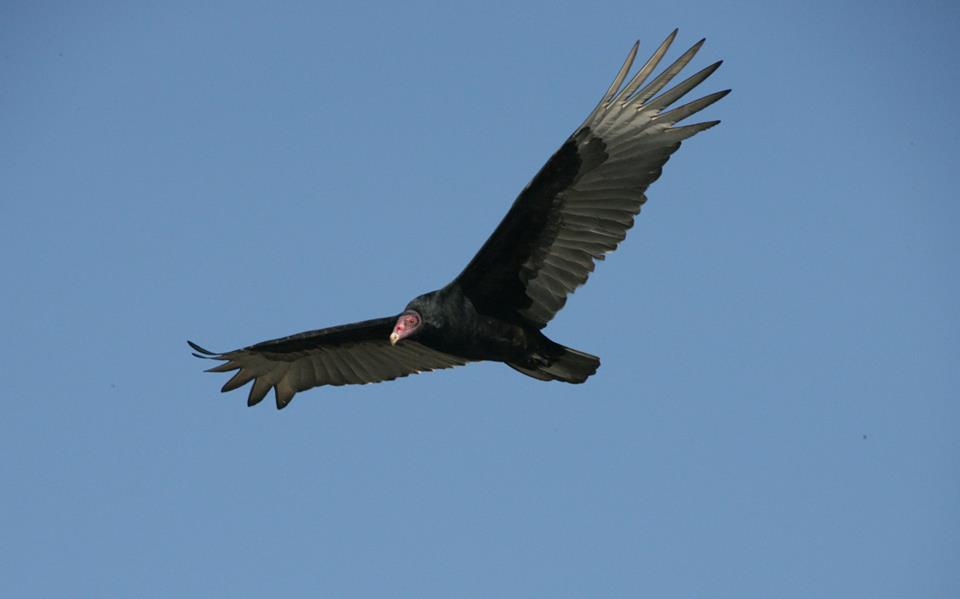 preserve. Their “conk-la-ree” calls carry while they set up their territories. The black-capped chickadees song changes to “fee-bee” as Canada geese honk loudly while waddling around on frozen ponds. Turkey vultures spiral north eagerly awaiting what’s uncovered as snow melts. American robins scout thawed grassy areas for worms and other invertebrates. Keep an eye out for frogs and salamanders which will be active soon. Soon the ponds will be filled with the spring peeper’s chorus.
preserve. Their “conk-la-ree” calls carry while they set up their territories. The black-capped chickadees song changes to “fee-bee” as Canada geese honk loudly while waddling around on frozen ponds. Turkey vultures spiral north eagerly awaiting what’s uncovered as snow melts. American robins scout thawed grassy areas for worms and other invertebrates. Keep an eye out for frogs and salamanders which will be active soon. Soon the ponds will be filled with the spring peeper’s chorus.
By Michael Adriaansen

